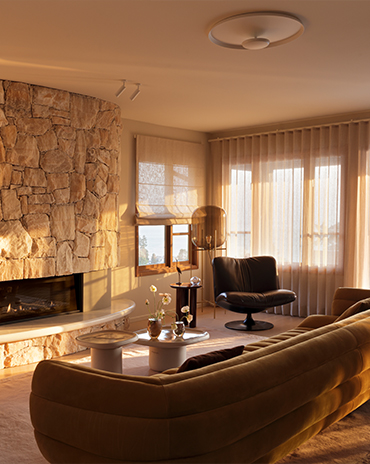Copyright © 2025 Motivate Media Group. All rights reserved.
Be Architektur’s residential project in Switzerland is a unique interpretation of the vernacular barn typology
The residential project is designed in a traditional barn, yet in a modern way that blends into its rustic and agricultural surroundings
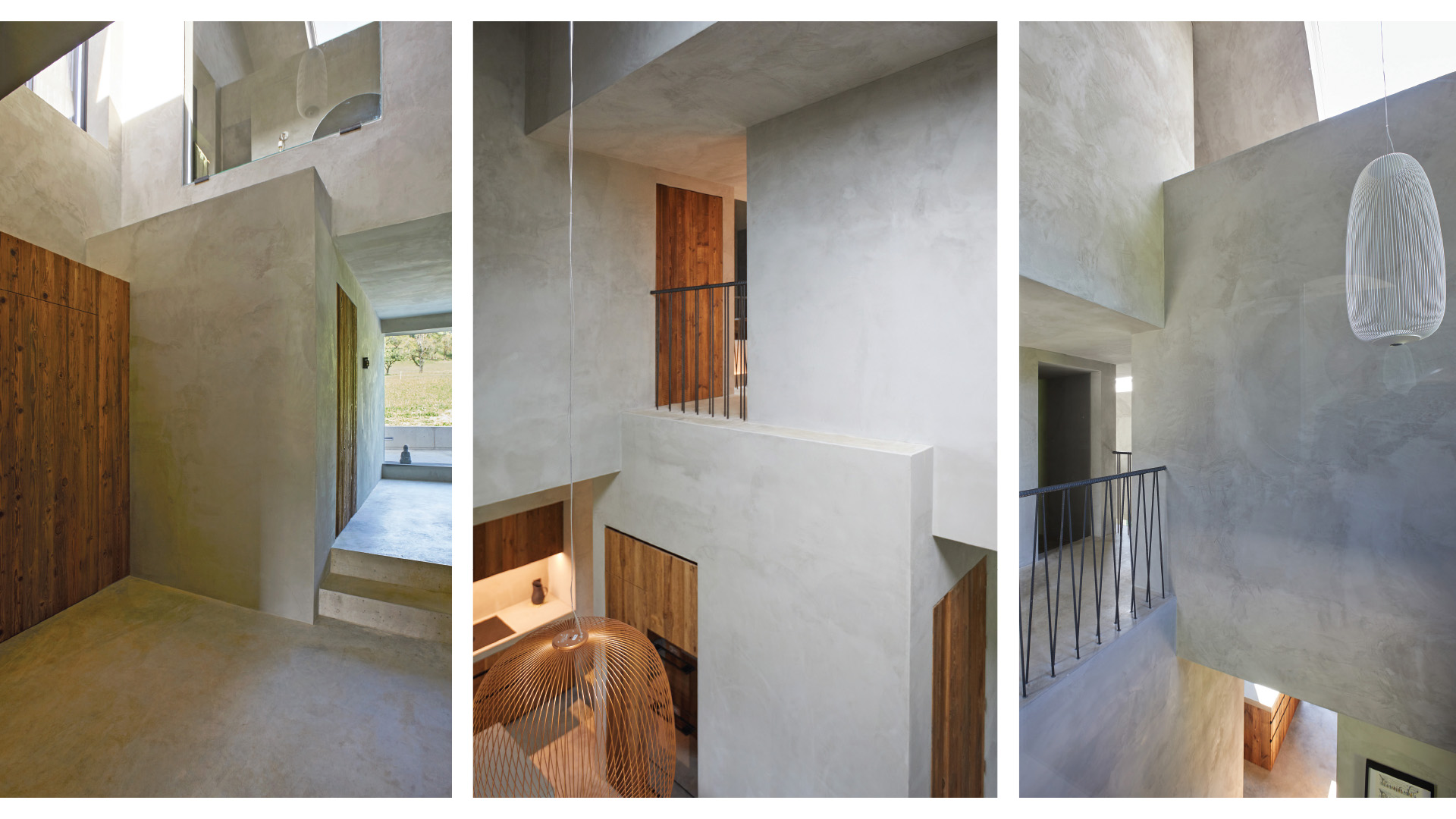
Be Architektur designed its latest residential barn project in a Hamlet Zone of rural, mainly agricultural place of Switzerland. Typical barn characteristics were taken up and reinterpreted in a modern way. From a distance, the residence discreetly blends into its rustic surroundings. The exterior facade is clad in glazed spruce wood – the same type of timber used on traditional Swiss barns. A pitched roof was designed in the same vein, with tile roofing typical to the local architecture. Openable windows are concealed behind wooden shutters, while the generous fixed glazing is fronted by wooden sliding doors that provide sun protection, darkening, and privacy. A raw steel beam serves as a gutter, jutting out beyond the base of the roof. Downpipes were omitted; the rainwater drains off the side like a waterfall.
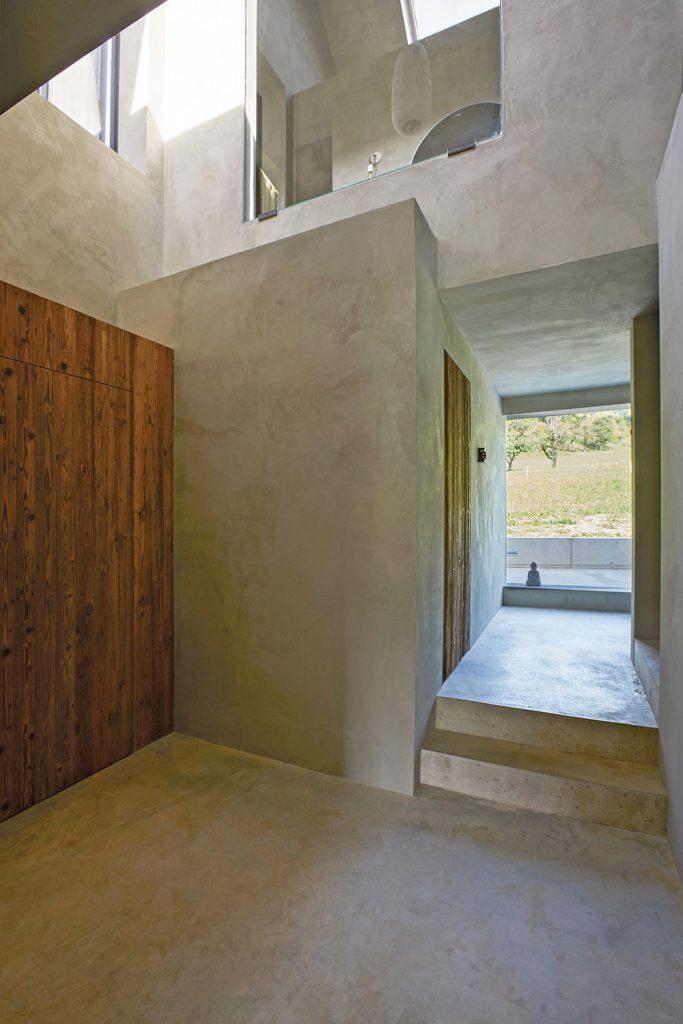
Wood fixtures add warmth to the space
The building responds to the topography of the site. Building on a slope usually requires excavation behind the building and backfilling in front, but this approach was deliberately rejected. Instead, the ground floor is arranged in a series of levels at different heights to follow the existing slope.
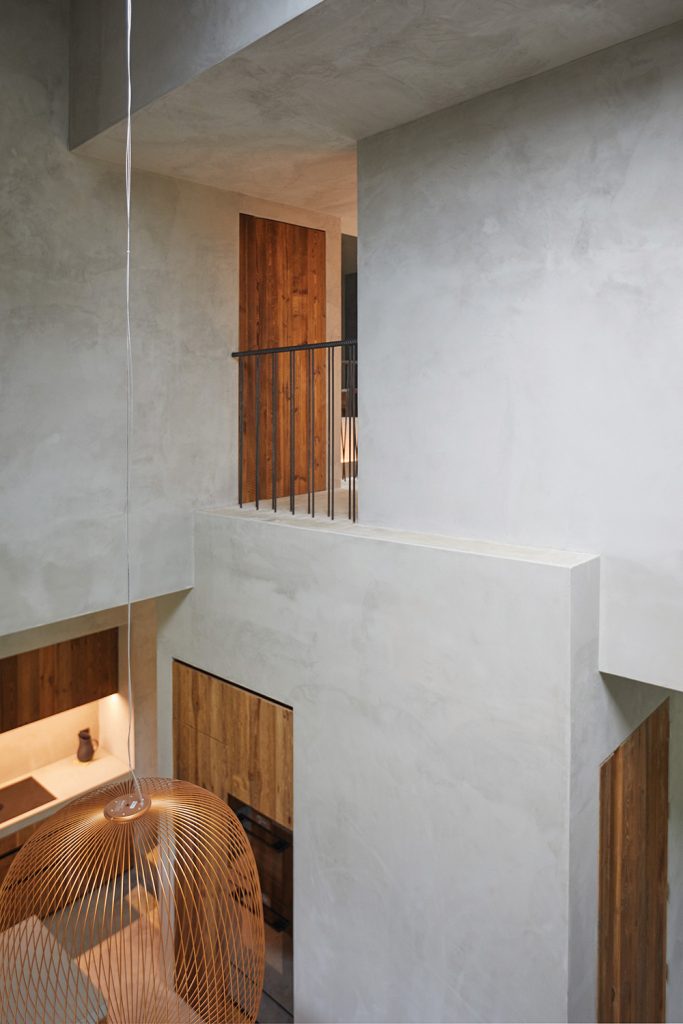
Clean minimal designs
A barn is typically used for storage and as a workroom for agricultural production. Although this new building is not a depository, its rooms – bedrooms, bathrooms, closets, etc. – are “stored” within it as closed volumes figuratively stacked on top of one another. This “stacking” creates a sculptural interior, which is a positive spatial volume within the building.
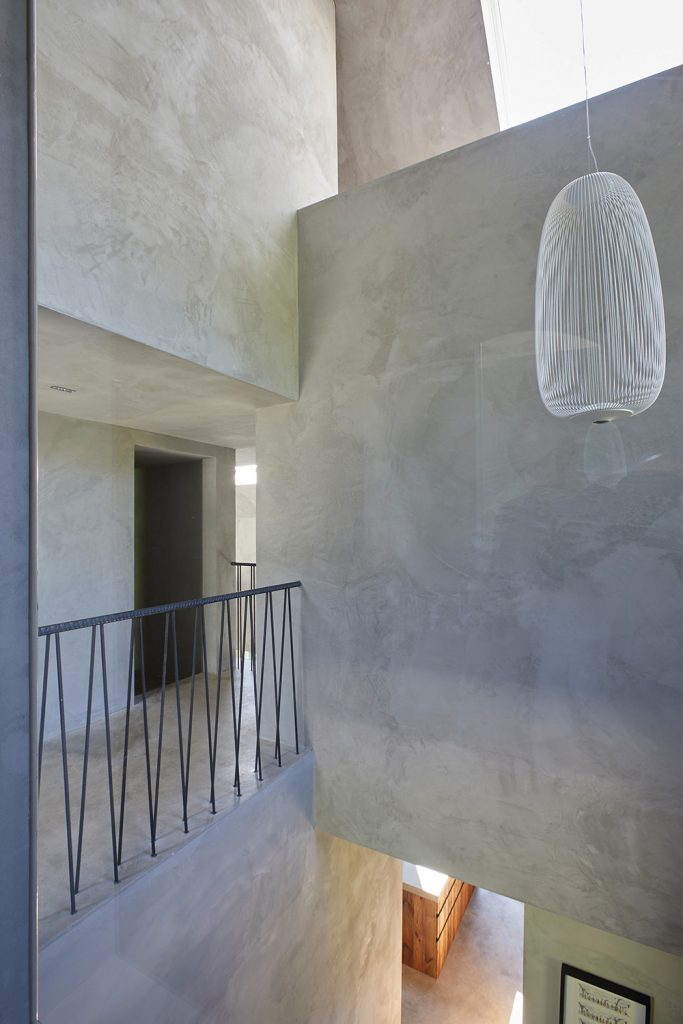
Subtle design elements
A negative volume forms around these stacks, comprising a landscape of open living spaces that are interconnected vertically and horizontally. A generous interior unfolds with a sense of endless expanse. The new building reinterprets the simple, unadorned nature of a traditional barn through its choice of materials. Exposed concrete slabs for the floor and a special plaster covering the walls ensure a raw, unfinished feel. Two different materials with a similar effect – concrete and plaster – are used throughout the interior to achieve an expressive effect.
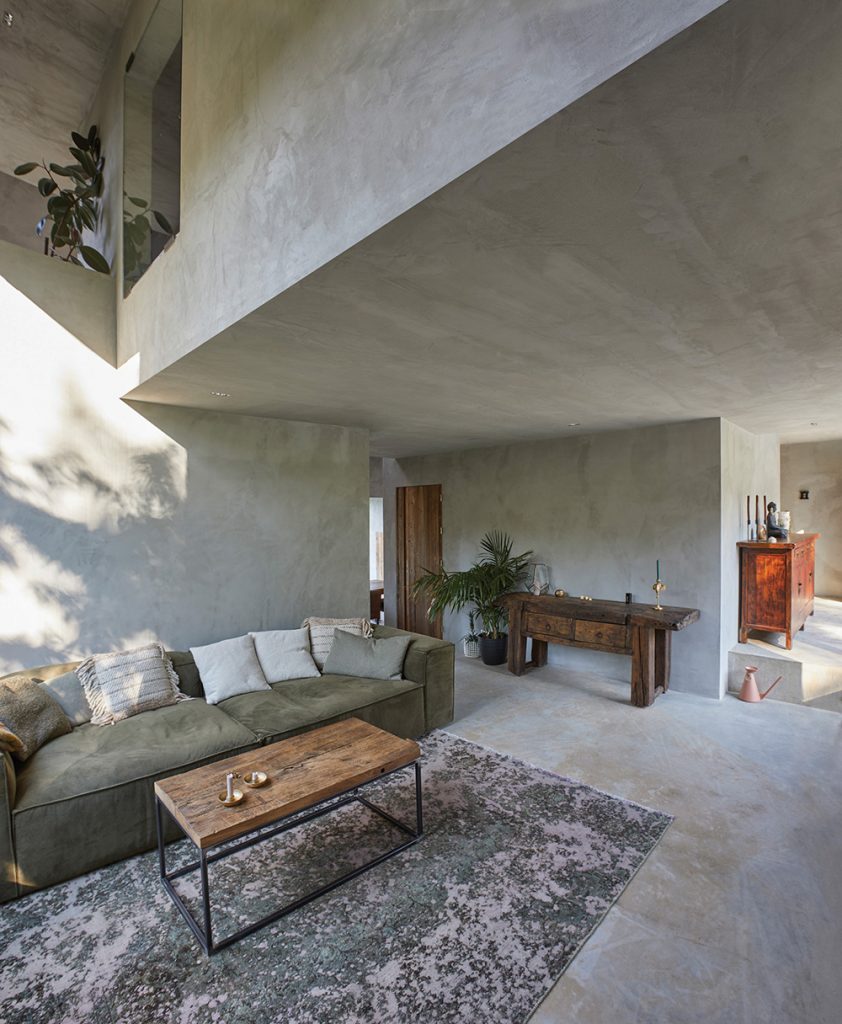
Concrete styled interiors
The freestanding two-car garage in exposed concrete was created using the same timber formwork as that used for the house facade. A photovoltaic system was installed on the gently sloping concrete gable roof, with solar panels covering the surface like a carpet.
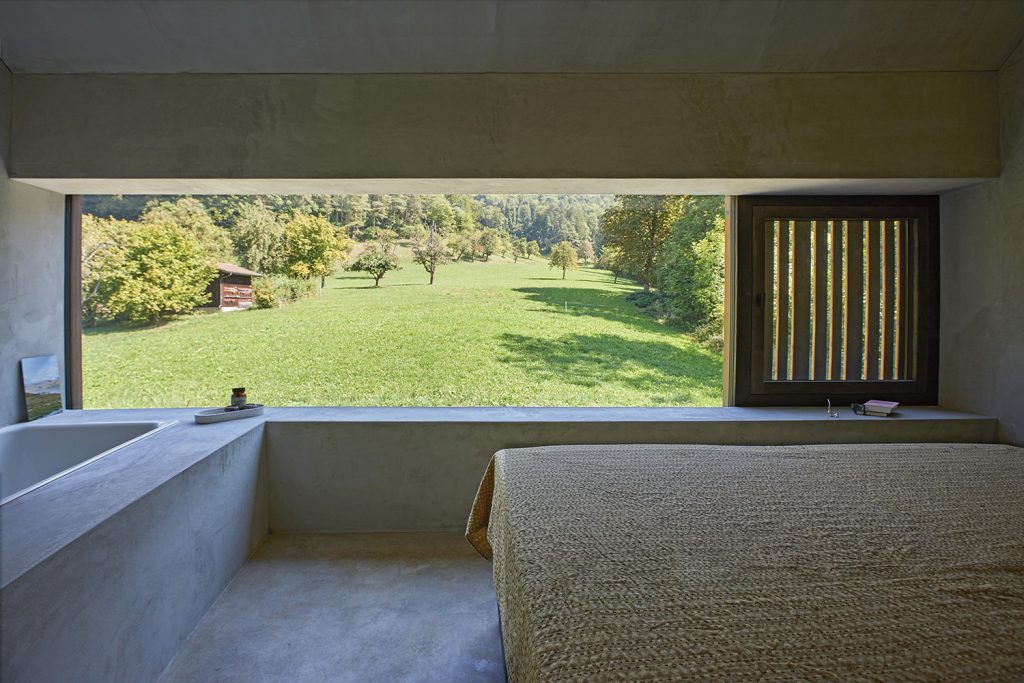
The residence discreetly blends into its rustic surroundings
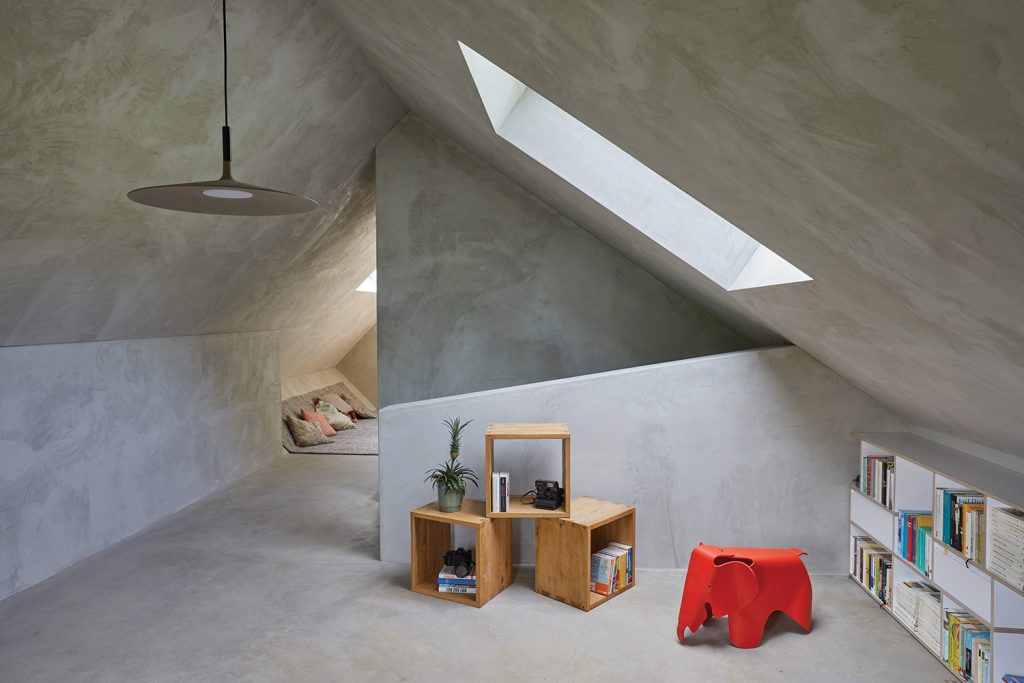
The building responds to the topography of the site
The new home enters into a thematic dialogue with the surrounding agricultural buildings for a unique interpretation of the vernacular barn typology.
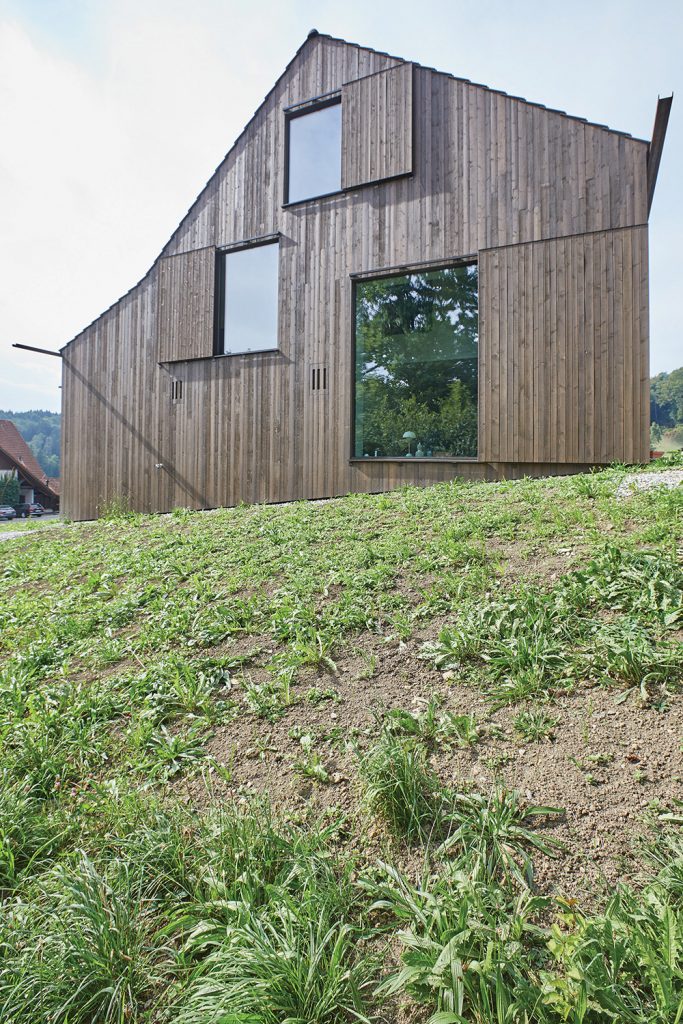
The exterior facade is clad in glazed spruce wood
Technical sheet
Client: Private owners
Living space: 215 m²
Civil engineer: suisseplan Ingenieure AG, Zurich
Lighting design: Lichtblick AG, Buchs
Building physics: Wichser Akustik & Bauphysik AG, Zurich
HVAC planning: Elsner Klima AG Adliswil
Photography by Vito Stallone
The Latest
Highlights of the Biennale Architettura 2025
We shine a light on the pavilions from the Arab world at the Venice Architecture Biennale, on display until Sunday 23 November 2025
Read ‘Bold Design’ – Note from the editor – July/August 2025
Read identity magazine's July/August 2025 edition on ISSUU or grab your copy at the newsstands.
Things to Covet in June 2025
Elevate your spaces with a pop of colour through these unique pieces
Designing Spaces with Purpose and Passion
We interview Andrea Savage from A Life By Design – Living & Branding on creating aesthetically beautiful and deeply functional spaces
Craft and Finesse
EMKAY delivers a bold and intricate fit-out by transforming a 1,800 sqm space into SUSHISAMBA Abu Dhabi, a vibrant multi-level dining experience
An Impressive Entrance
The Synua Wall System by Oikos offers modularity and style
Drifting into Summer
Perennials unveils the Sun Kissed collection for 2025
The Fold
Architect Rabih Geha’s collaboration with Iwan Maktabi
From Floorplans to Foodscapes
For Ayesha Erkin, architecture was never just about buildings, but about how people live, eat, gather and remember
Between Sea and Sky
Cycladic heritage, heartfelt hospitality and contemporary design converge on Deos Mykonos, designed by GM Architects
A Fresh Take on ’70s Style
Curved shapes and colourful artworks bring vibrancy to this contemporary home with mesmerising nature views
















